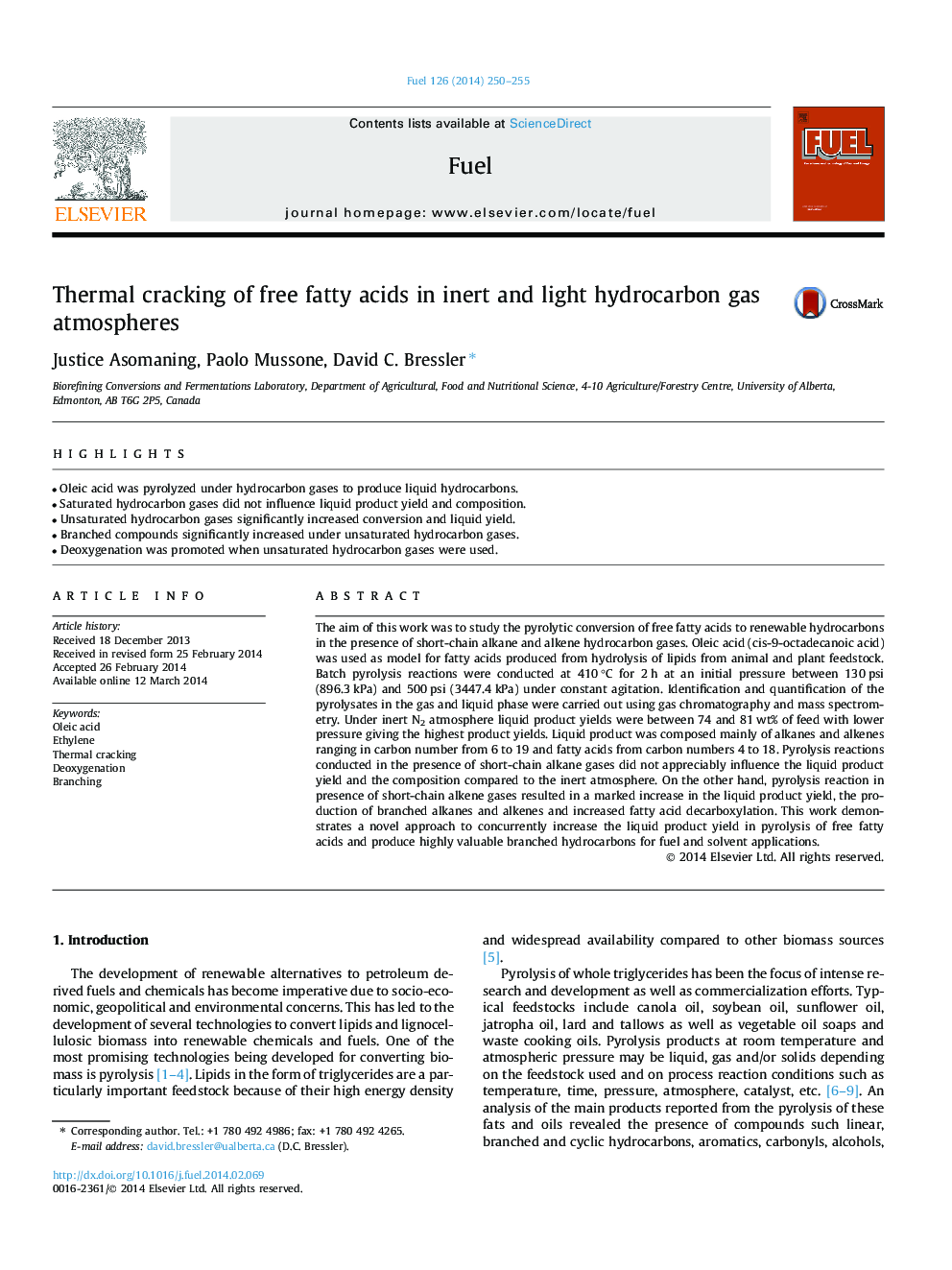| Article ID | Journal | Published Year | Pages | File Type |
|---|---|---|---|---|
| 6637837 | Fuel | 2014 | 6 Pages |
Abstract
The aim of this work was to study the pyrolytic conversion of free fatty acids to renewable hydrocarbons in the presence of short-chain alkane and alkene hydrocarbon gases. Oleic acid (cis-9-octadecanoic acid) was used as model for fatty acids produced from hydrolysis of lipids from animal and plant feedstock. Batch pyrolysis reactions were conducted at 410 °C for 2 h at an initial pressure between 130 psi (896.3 kPa) and 500 psi (3447.4 kPa) under constant agitation. Identification and quantification of the pyrolysates in the gas and liquid phase were carried out using gas chromatography and mass spectrometry. Under inert N2 atmosphere liquid product yields were between 74 and 81 wt% of feed with lower pressure giving the highest product yields. Liquid product was composed mainly of alkanes and alkenes ranging in carbon number from 6 to 19 and fatty acids from carbon numbers 4 to 18. Pyrolysis reactions conducted in the presence of short-chain alkane gases did not appreciably influence the liquid product yield and the composition compared to the inert atmosphere. On the other hand, pyrolysis reaction in presence of short-chain alkene gases resulted in a marked increase in the liquid product yield, the production of branched alkanes and alkenes and increased fatty acid decarboxylation. This work demonstrates a novel approach to concurrently increase the liquid product yield in pyrolysis of free fatty acids and produce highly valuable branched hydrocarbons for fuel and solvent applications.
Related Topics
Physical Sciences and Engineering
Chemical Engineering
Chemical Engineering (General)
Authors
Justice Asomaning, Paolo Mussone, David C. Bressler,
